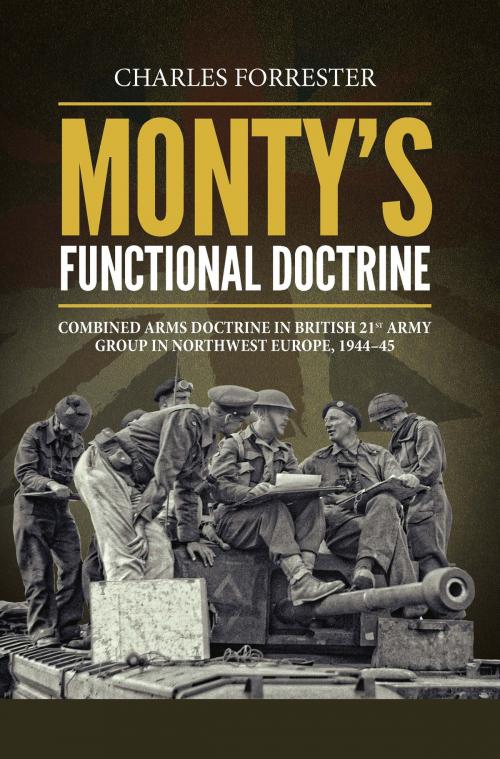Monty's Functional Doctrine
Combined Arms Doctrine in British 21st Army Group in Northwest Europe, 1944–45
Nonfiction, History, Military, World War II| Author: | Charles Forrester | ISBN: | 9781912174539 |
| Publisher: | Helion and Company | Publication: | August 19, 2015 |
| Imprint: | Helion and Company | Language: | English |
| Author: | Charles Forrester |
| ISBN: | 9781912174539 |
| Publisher: | Helion and Company |
| Publication: | August 19, 2015 |
| Imprint: | Helion and Company |
| Language: | English |
Using a combination of new perspectives and new evidence, this book presents a reinterpretation of how 21st Army Group produced a successful combined arms doctrine by late 1944 and implemented this in early 1945. Historians, professional military personnel and those interested in military history should read this book, which contributes to the radical reappraisal of Great Britain’s fighting forces in the last years of the Second World War, with an exploration of the reasons why 21st Army Group was able in 1944–45 to integrate the operations of its armor and infantry.
The key to understanding how the outcome developed lies in understanding the ways in which the two processes of fighting and the creation of doctrine interrelated. This requires both a conventional focus on command and a cross-level study of Montgomery and a significant group of commanders. The issue of whether or not this integration of combat arms (a guide to operational fighting capability) had any basis in a common doctrine is an important one. Alongside this stands the new light this work throws on how such doctrine was created. A third interrelated contribution is in answering how Montgomery commanded, and whether and to what extent, doctrine was imposed or generated. Further it investigates how a group of ‘effervescent’ commanders interrelated, and what the impact of those interrelationships was in the formulation of a workable doctrine.
The book makes an original contribution to the debate on Montgomery’s command style in Northwest Europe and its consequences, and integrates this with tracking down and disentangling the roots of his ideas, and his role in the creation of doctrine for the British Army’s final push against the Germans. In particular the author is able to do something that has defeated previous authors: to explain how doctrine was evolved and, especially who was responsible for providing the crucial first drafts, and the role Montgomery played in revising, codifying and disseminating it.
Using a combination of new perspectives and new evidence, this book presents a reinterpretation of how 21st Army Group produced a successful combined arms doctrine by late 1944 and implemented this in early 1945. Historians, professional military personnel and those interested in military history should read this book, which contributes to the radical reappraisal of Great Britain’s fighting forces in the last years of the Second World War, with an exploration of the reasons why 21st Army Group was able in 1944–45 to integrate the operations of its armor and infantry.
The key to understanding how the outcome developed lies in understanding the ways in which the two processes of fighting and the creation of doctrine interrelated. This requires both a conventional focus on command and a cross-level study of Montgomery and a significant group of commanders. The issue of whether or not this integration of combat arms (a guide to operational fighting capability) had any basis in a common doctrine is an important one. Alongside this stands the new light this work throws on how such doctrine was created. A third interrelated contribution is in answering how Montgomery commanded, and whether and to what extent, doctrine was imposed or generated. Further it investigates how a group of ‘effervescent’ commanders interrelated, and what the impact of those interrelationships was in the formulation of a workable doctrine.
The book makes an original contribution to the debate on Montgomery’s command style in Northwest Europe and its consequences, and integrates this with tracking down and disentangling the roots of his ideas, and his role in the creation of doctrine for the British Army’s final push against the Germans. In particular the author is able to do something that has defeated previous authors: to explain how doctrine was evolved and, especially who was responsible for providing the crucial first drafts, and the role Montgomery played in revising, codifying and disseminating it.















